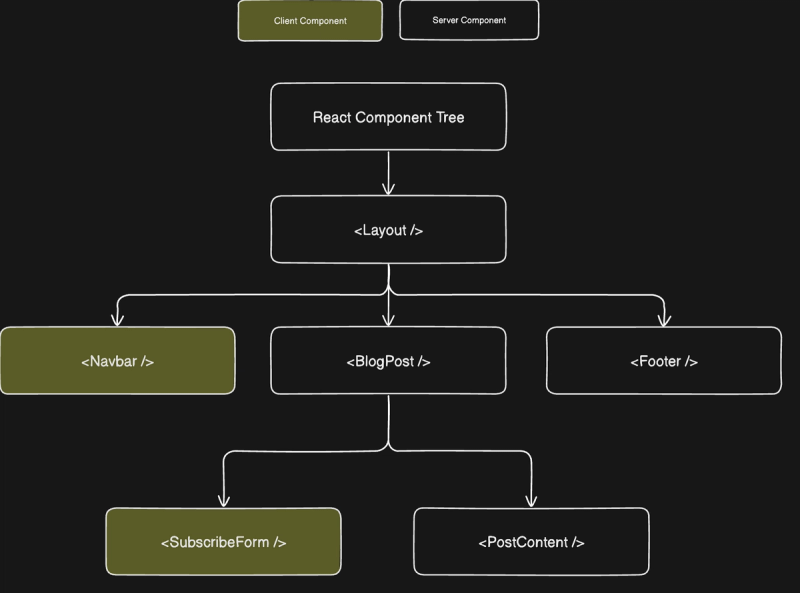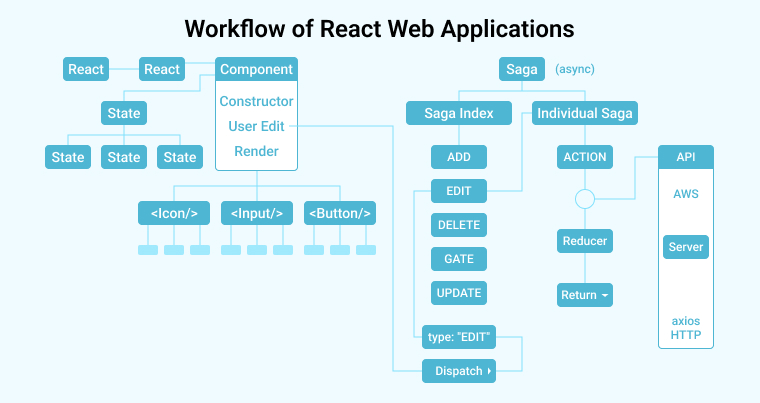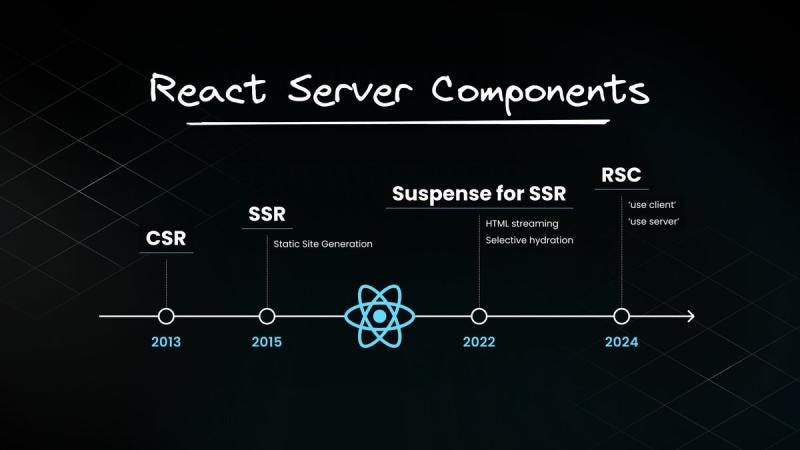The State of React: A Deep Dive into the Latest Ecosystem News and Trends
The React ecosystem is in a perpetual state of evolution, but the recent shifts represent more than just incremental updates—they signify a fundamental change in how we architect and build web applications. For developers, staying current is not just beneficial; it’s essential. The latest React News isn’t about a single new library but a paradigm shift towards server-centric architecture, driven by the official release of React Server Components (RSCs). This move has profound implications for performance, data fetching, and the role of meta-frameworks.
This article provides a comprehensive overview of the most critical developments across the React landscape. We’ll explore the server-side renaissance led by frameworks like Next.js and Remix, dissect the evolution of state management beyond traditional patterns, and examine the latest advancements in the vast tooling universe, including testing and the ever-growing React Native News. Whether you’re a seasoned professional or just starting, this guide will equip you with the knowledge to navigate the modern React ecosystem, write more efficient code, and build next-generation applications.
Section 1: The Server-Side Renaissance and React’s Paradigm Shift
The most significant development in the React world is the maturation of server-centric patterns. For years, the focus was on building powerful client-side applications (SPAs). Now, the pendulum is swinging back, combining the rich interactivity of the client with the power and performance of the server. This is not a return to the old ways but a sophisticated hybrid model.
Understanding React Server Components (RSCs)
At the heart of this shift are React Server Components. Unlike components in a traditional Server-Side Rendering (SSR) setup, RSCs run exclusively on the server and their code is never sent to the browser. This has game-changing benefits:
- Zero Bundle-Size: Since the component code and its dependencies don’t ship to the client, you can use heavy libraries for tasks like date formatting, markdown parsing, or data processing on the server without impacting the user’s download size.
- Direct Backend Access: RSCs can directly access server-side resources like databases, file systems, or internal APIs without needing to expose an API endpoint. This simplifies data fetching logic immensely.
- Automatic Code Splitting: All imports within an RSC are automatically handled on the server, eliminating the need for manual code splitting with tools like
React.lazyfor server-rendered code.
This approach allows developers to build large parts of their UI with components that contribute nothing to the client-side JavaScript bundle, leading to a much faster initial page load and a more responsive experience. Here is a practical example of a Server Component fetching data directly.
// app/components/ProductList.jsx
// This is a React Server Component (RSC) by default in Next.js App Router
// We can directly import a server-side library
import { db } from '@/lib/db';
// The component itself can be async!
async function ProductList() {
// Direct database access inside a component
const products = await db.product.findMany({
take: 10,
orderBy: { createdAt: 'desc' },
});
if (!products.length) {
return <p>No products found.</p>;
}
return (
<ul>
{products.map((product) => (
<li key={product.id}>
{product.name} - ${product.price}
</li>
))}
</ul>
);
}
export default ProductList;Frameworks Leading the Charge: Next.js and Remix
You can’t use RSCs without a framework that supports them. The latest Next.js News is dominated by its App Router, which fully embraces RSCs as the default. This “server-by-default” model encourages developers to build static UI on the server and only opt-in to client-side interactivity with the "use client" directive. Meanwhile, the latest Remix News shows the framework’s continued focus on web standards, progressive enhancement, and robust data loading patterns, which align perfectly with the server-centric philosophy. While their implementations differ, both frameworks are pushing the ecosystem towards this powerful new architecture. Other frameworks like Gatsby News are also exploring these server-first concepts to improve build times and performance.
Section 2: Evolving State and Modern Data Fetching
As the line between client and server blurs, our approach to state management is also evolving. The community is moving away from a single, monolithic client-side store for all application data and towards a more nuanced approach that distinguishes between UI state and server cache.
The Rise of Atomic State Management
For client-side UI state (e.g., modal visibility, form inputs, theme toggles), the trend is towards lightweight, atomic state managers. These libraries provide a simpler, more intuitive API than traditional solutions. The latest Redux News is that while Redux Toolkit has drastically reduced boilerplate, many developers are now reaching for even simpler alternatives.
Libraries leading this charge include:
- Zustand: A small, fast, and scalable state management solution that uses a simple hook-based API. The latest Zustand News is its widespread adoption due to its minimal boilerplate and flexibility.
- Jotai: Takes an “atomic” approach inspired by Recoil, where state is broken down into small, independent pieces (atoms). The latest Jotai News highlights its powerful derived atoms and excellent TypeScript support.
- Recoil & MobX: While Recoil was an early pioneer in atomic state, the latest Recoil News shows slower development compared to others. MobX News continues to show its strength in complex applications where observable state and automatic reaction to changes are paramount.
Here’s how simple it is to create and use a shared state store with Zustand.
// store/uiStore.js
import { create } from 'zustand';
export const useUIStore = create((set) => ({
isSidebarOpen: false,
toggleSidebar: () => set((state) => ({ isSidebarOpen: !state.isSidebarOpen })),
closeSidebar: () => set({ isSidebarOpen: false }),
}));
// components/Header.jsx
// This must be a Client Component to use hooks
"use client";
import { useUIStore } from '@/store/uiStore';
function Header() {
const toggleSidebar = useUIStore((state) => state.toggleSidebar);
return <button onClick={toggleSidebar}>Menu</button>;
}
// components/Sidebar.jsx
"use client";
import { useUIStore } from '@/store/uiStore';
function Sidebar() {
const isOpen = useUIStore((state) => state.isSidebarOpen);
if (!isOpen) return null;
return <aside>Navigation Links...</aside>;
}Data Fetching as Server State
One of the biggest realizations in modern React is that data fetched from an API is not client state—it’s a cache of server state. Libraries like TanStack Query (formerly React Query) and SWR have revolutionized this space. The latest React Query News is its framework-agnostic nature and powerful features like caching, background revalidation, and optimistic updates. These tools handle loading states, error handling, and data synchronization out of the box. For GraphQL, the latest Apollo Client News and Urql News show these libraries continue to be the top choices, providing similar caching capabilities tailored to the GraphQL specification, while Relay News from Meta continues to push boundaries in performance for large-scale applications.
Section 3: The Expanding Universe of React Native and Tooling
React’s influence extends far beyond the web. The mobile and tooling ecosystems are also seeing rapid innovation, making it easier than ever to build high-quality, cross-platform applications and maintain a smooth development workflow.
React Native’s New Architecture and Universal UI
The biggest React Native News is the rollout of its New Architecture, featuring the JavaScript Interface (JSI), Fabric Renderer, and TurboModules. This overhaul brings significant performance improvements by enabling more direct communication between JavaScript and native threads. Alongside this, the Expo News continues to be a story of simplification; tools like Expo Application Services (EAS) and Development Clients have made building and deploying complex native apps more accessible than ever.
A major trend is the rise of universal UI kits. The latest Tamagui News is particularly exciting, as it provides a performant component library that can be compiled for both React Native and the web, enabling true “write once, run anywhere” component logic. This bridges the gap between web frameworks like Next.js and native development. Of course, established libraries like React Native Paper News, NativeBase News, and React Native Elements News continue to offer robust, platform-specific component sets for developers focused purely on mobile.

Here’s a conceptual Tamagui component that can be rendered on both platforms.
import { Button, YStack, Text } from 'tamagui';
import { Heart } from '@tamagui/lucide-icons';
// This component works on web (Next.js) and mobile (React Native)
export function UniversalCard({ title, onPress }) {
return (
<YStack
padding="$4"
borderWidth={1}
borderColor="$borderColor"
borderRadius="$4"
space="$2"
hoverStyle={{ backgroundColor: '$backgroundHover' }}
>
<Text fontSize="$6" fontWeight="bold">
{title}
</Text>
<Button icon={Heart} onPress={onPress}>
Like
</Button>
</YStack>
);
}Modernizing the Development and Testing Workflow
The developer experience has also seen massive upgrades. The biggest Vite News is its explosive growth as a build tool, offering near-instantaneous hot module replacement (HMR) and significantly faster development server start times compared to traditional bundlers. In testing, the latest React Testing Library News confirms its position as the industry standard for component testing. It encourages testing from the user’s perspective, leading to more resilient tests. It’s typically paired with the Jest News runner. For end-to-end testing, the debate between Cypress News and Playwright News continues, with both offering powerful features for browser automation. For mobile, Detox News remains the go-to for gray-box E2E testing in React Native. Finally, the latest Storybook News shows its evolution from a simple component viewer to an essential workshop for building, testing, and documenting entire design systems.
Section 4: Best Practices and Optimization in the Modern Era
Navigating this new landscape requires adopting new best practices. The “old way” of doing things may no longer be optimal in a server-first world. Here are key considerations for building modern React applications.
“When to Use a Client Component”
With frameworks like Next.js making Server Components the default, the most common question is when to use the "use client" directive. The rule of thumb is simple: only use it when you need client-side interactivity. This includes:

- Using Hooks: Any component that uses
useState,useEffect,useContext, or other hooks that rely on browser state must be a Client Component. - Event Handlers: Components with event listeners like
onClick,onChange, etc., require client-side JavaScript to function. - Browser-only APIs: If your component needs to access
window,localStorage, or other browser-specific APIs, it must be marked as a client component.
The best practice is to keep Client Components as small and as far down the component tree as possible (i.e., in the “leaves” of your UI). Wrap server-rendered content with interactive client wrappers where needed.
Leveraging Suspense for a Superior User Experience
Suspense is a core React feature that has become central to the new server-centric data fetching model. It allows you to declaratively specify loading states for parts of your UI that are waiting for asynchronous operations, such as data fetching in a Server Component or code splitting with React.lazy. This enables more granular loading states and prevents the entire page from being blocked by a single slow data source.
import { Suspense } from 'react';
import { UserProfile } from './UserProfile'; // An async RSC
import { UserPosts } from './UserPosts'; // Another async RSC
import { SkeletonProfile, SkeletonPosts } from './Skeletons';
export default function ProfilePage({ userId }) {
return (
<div>
<h1>User Dashboard</h1>
<Suspense fallback={<SkeletonProfile />}>
<UserProfile userId={userId} />
</Suspense>
<h2>Recent Posts</h2>
<Suspense fallback={<SkeletonPosts />}>
<UserPosts userId={userId} />
</Suspense>
<div>
);
}This pattern allows the `UserProfile` and `UserPosts` components to stream in as their data becomes available, improving the perceived performance for the user. For rich client-side animations, the latest Framer Motion News and React Spring News show these libraries are still the leaders for creating fluid and complex UI animations within your Client Components.
Conclusion: Embracing the Future of React
The React ecosystem is undergoing its most significant transformation in years. The shift towards server-centric patterns with React Server Components is not just a trend but a foundational evolution that redefines how we build for the web. This change brings incredible performance benefits and simplifies data-fetching logic, but it requires developers to adapt their mental models.
Key takeaways from the latest React News include the centrality of frameworks like Next.js, the move towards lighter, more atomic state management on the client with tools like Zustand, and the continued convergence of web and native development. To stay ahead, developers should embrace the “server-by-default” mindset, learn to distinguish between server and client concerns, and leverage the powerful new tools at their disposal. The best next step is to start a new project with the Next.js App Router or explore integrating a modern state manager into an existing application. The future of React is a powerful hybrid of server and client, and now is the perfect time to build it.











